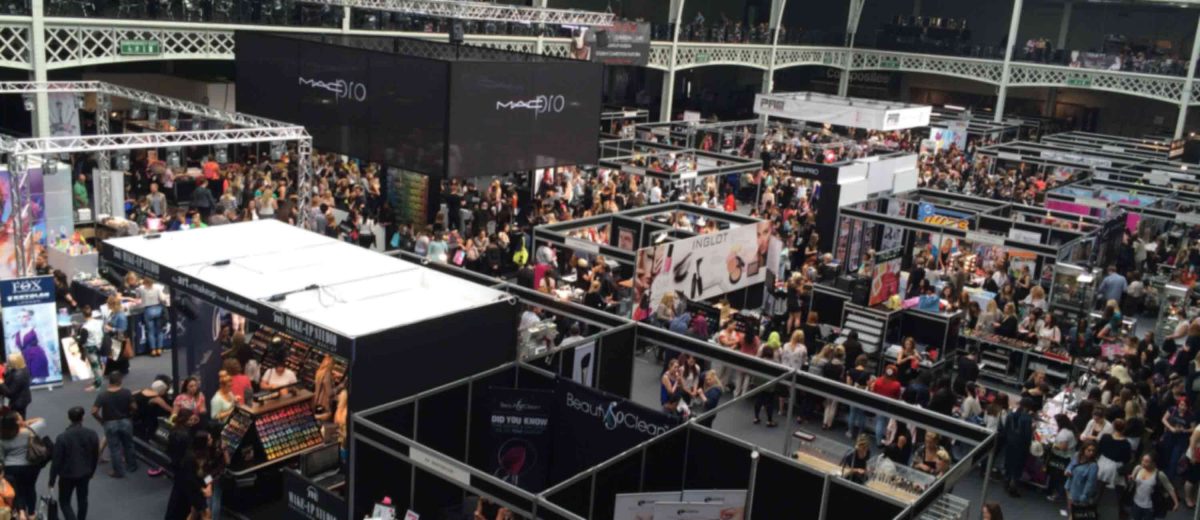In our series we’ve looked at Geofencing, IP Targeting and Beacons. Now, let’s put them into a real-life scenario and see which would be the best fit for you to use. Let’s head to a trade show!
Heading to the Trade Show
So you are heading out to a trade show and want to effectively market to other attendees while you are there. What is the best technology? The answer depends on your goals and budget. Let’s look at each scenario to help you decide.
Setting up a Beacon
So we are going to use a beacon. First, we’ll need to buy the physical beacon to install in our booth. The price of a beacon is between $50 and $200 depending on the booth size and features needed. From there, we have to have the right app. Remember, beacons work because the device that receives the beacon signal has a specific app installed that responds to the signal. That means we need an app. You may have an in-house developer, if not, be ready. Custom development can start around $5000 and go up from there. Still, we have more to do. For our app to work, visitors will have to have the app installed on their phones. There are many ways to entice someone (i.e. giveaways, discounts, etc.) and each of those have an associated cost. From there, anytime someone with your app comes near the booth you can interact with them.
Pros and Cons of Beacons at Trade Shows
Beacons works great if your company already has an app development and deployment strategy worked out as part of the business model. If not, there is a lot of cost and planning with the customer clearly seeing the end game is to advertise to them while they are at the show.
Setting Up IP Targeting
So we are going to use IP Targeting. Once we get to the show, we harvest all the IP addresses of the public available networks. These are the WiFi networks that are setup specifically for attendees and/or vendors. There may be more than one access point depending on the configuration, but with the right tools, this is no issue. When the IP addresses are known, you can begin targeting ads to this network. Additionally, you can target the major hotels near the convention where the bulk of the attendees will be staying. Again, you’ll be sending targeted ads to those hotels so that attendees logging onto the hotel WiFi will see your ads. All the necessary creative is setup ahead of time and points attendees to your booth, or delivers additional information that can be used as part of an inbound campaign. From there, you can use page based cookie re-targeting so that people will continue to see your message after the show.
Pros and Cons of IP Targeting at Trade Shows
IP Targeting is highly targeted to everyone on the given networks. Targeting can be specific to vendors and/or any attendees that login either at the hotel or in the convention center. However, if your customer does not login to a network you have targeted, they will not see the ad. Additionally, if a prospect does not click on your ad, there is not re-targeting after the show concludes, or the prospect leaves.
 Setting Up Geofencing
Setting Up Geofencing
So we are going to use a geofence. We need to look at the convention location. From there we establish the central point and the radius we need. All of the necessary ads will need to be created and setup ahead of time to point to the booth during the show as well as setting up for our re-targeting campaign. Remember, geofencing allows for location based re-targeting so we can continue to send ads to participants after the show concludes. The delay between the start of the re-target campaign and the show will allow for some flexibility so that you can take advantage of a key topic or event that came to light during the show. From there, the campaign will use the active geofences to gather information on mobile devices that are active within the fence.
Pros and Cons of Geofencing at Trade Shows
Geofences allow you to target all devices as they walk into the trade show venue. Additionally, you can continue to send ads to an attendee’s mobile device, even if they did not see or interact with your initial banner ad. However, if the trade show area has many floors, the entire area is targeted. This may cause issues depending on the location of the event.
So What’s The Answer?
The answer is, what is your goal? You can see that each technology has several key advantages and disadvantages. Either of the 3 may be the best answer depending on your goal and company position at the trade show. At Element 502 our digital targeting specialists can work with you to determine the technology that best fits your need and help you implement your strategy and solution. Give us a call or contact us to learn more.



 Setting Up Geofencing
Setting Up Geofencing
Great article.
Thanks!